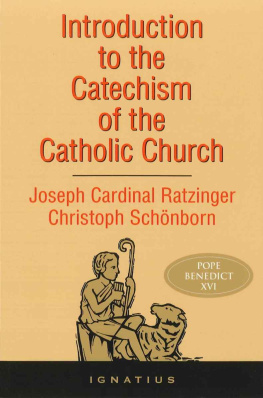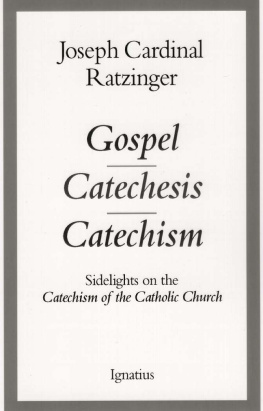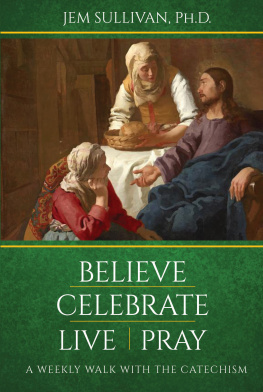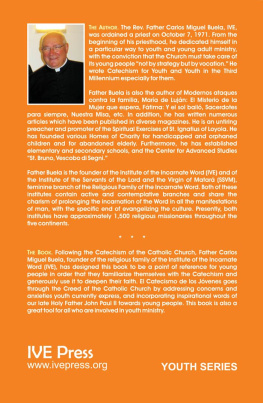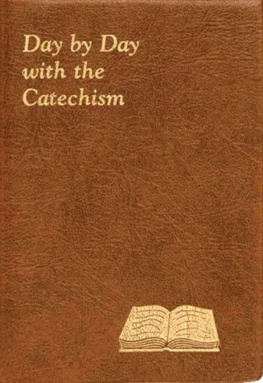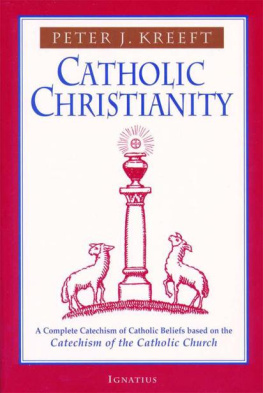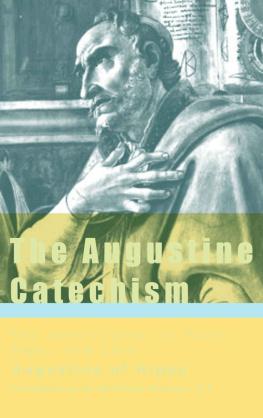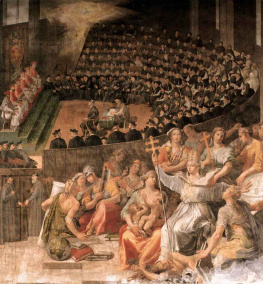INTRODUCTION TO THE
CATECHISM OF THE CATHOLIC CHURCH
JOSEPH CARDINAL RATZINGER
CHRISTOPH SCHNBORN
Introduction to the
Catechism of the
Catholic Church

IGNATIUS PRESS SAN FRANCISCO
Cover design by Roxanne Mei Lum
1994 Ignatius Press, San Francisco
All rights reserved
ISBN 978-0-89870-485-3 (PB)
ISBN 978-1-68149-269-8 (E)
Library of Congress catalogue number 94-75081
Printed in the United States of America
Contents
Joseph Cardinal Ratzinger
Christoph Schnborn
Christoph Schnborn
Foreword
The Catechism of the Catholic Church , which Pope John Paul II solemnly presented to the Church on December 7, 1992, has only just begun its career. In a short time it has unleashed a ground swell of approbation around the world. In the countries where it has appeared so far, high sales figures attest to the interest in this work, indeed, to the pressing demand for it. Together with critical reactions, there are, in fact, numerous positive, even touching testimonials of joy over its publication and of the gratitude of manyand among them simple believers and even nonbelieverswho have found in the Catechism help for their faith and, therefore, for their life. Nevertheless, the deeper reception of the Catechism in the life of the Church still lies ahead. Preaching and proclamation have yet to discover in it an aid to comprehending and communicating the faith as a living, organic whole. Furthermore, the Catechism is meant to assist theology, which is becoming sterile and cold on account of overspecialization and rationalistic desiccation, to realize anew the admirable unity of the mystery of God (John Paul II in the Apostolic Constitution on the Catechism), in order to recover joy in the beauty of the faith and wonder over its vital energy. Catechesis must be encouraged to recognize that its paramount task is the transmission of knowledge of the faith. For all believers, the Catechism is a sure norm for the teaching of the faith (ibid.), which is designed to help them know their faith better, to live it more profoundly and to hand it on with firmer conviction.
This slim volume brings together various introductory presentations of the Catechism given by the authors since its appearance. Their written formulation here serves the same end as the original spoken versions. Their intention, in fact, is not to offer a comprehensive history of the text or an exhaustive commentary on it but elementary aids to reading and study, in other words, An Introduction to the Catechism of the Catholic Church.
On the feast of the Triumph of the Holy Cross
September 14, 1993
JOSEPH CARDINAL RATZINGER
CHRISTOPH SCHNBORN
Auxiliary Bishop of Vienna
Joseph Cardinal Ratzinger
Introduction to the
Catechism of the
Catholic Church

1. ON THE PREHISTORY OF THE CATECHISM
In October 1985, twenty years after the close of the Second Vatican Council, the Holy Father convoked an extraordinary synod, whose members, unlike those of ordinary synods, were the presidents of all the bishops conferences of the Catholic Church. The synod was meant to be more than a solemn commemoration of that great event in the history of the Church in which only a few of the bishops present had participated. Its task was to look not only to the past but also to the future: to pinpoint the situation of the Church; to recall the principal intention of the Council; to ask how to make this intention our own today and to render it fruitful for tomorrow. In this context there arose the idea of a catechism of the universal Church, analogous to the Roman Catechism of 1566, which in its day had made an essential contribution to the renewal of catechesis in the spirit of the Council of Trent. The idea of a catechism of the Second Vatican Council was not entirely new. In the final period of the Council, for example, the German Cardinal Jger had proposed the commissioning of such a book in order to give concrete form to the work of aggiornamento in the area of doctrine. As early as March 1966, the Dutch bishops conference, motivated by similar considerations, had published its catechism, which was eagerly received in many parts of the world as a renewed form of catechesis but which immediately raised serious questions as well. The Pope thereupon appointed a commission comprising six cardinals to investigate the matter. Their statement, submitted in October 1968, did not take issue with the praiseworthy originality of the Dutch catechism but found it necessary to render more precise, indeed to correct altogether, its affirmations regarding certain fundamental points. At the time, the question arose spontaneously whether the best response to the difficulties connected with this volume might not be to compose a catechism for the entire Church. I expressed the opinion then that the time was not yet ripe for such a project, and I continue to believe that this evaluation of the situation was correct. Jean Guitton, it is true, is reported to have said that the present catechism comes twenty-five years too late, and in a certain respect one may agree with him in this assertion. On the other hand, it must also be said that in 1966 the full extent of the problem had simply not become visible; that a process of fermentation had just begun which could lead only gradually to the clarifications necessary for a new common word.
While the bishops assembled in 1985 looked toward the past and the future, the conviction took shape in their minds, as if of its own accord, that the moment had now arrived and that the matter must not be delayed any further. Following the phase marked by the hectic zeal with which new catechisms had been produced in many places immediately after the Council, there had ensued an abandonment of the very idea of the catechism. The new texts, with their hasty aggiornamento , had themselves already begun to look dated; it is inevitable that whoever binds himself too rashly to today already looks old-fashioned tomorrow. The prevailing opinion was that constant changes of life and thought ruled out any statements valid for longer periods of time, with the result that catechesis had to be constantly written anew. Now it is certainly true that it must be constantly kept new, for catechesis makes the universal message contemporary by presenting it to particular men living at a particular time. But the act of rendering present presupposes something which reaches beyond the individual present moment, something which is always ready to be introduced into it afresh; otherwise it becomes void of content. As a matter of fact, the real result of this process of ever-new adaptations was an emptying out of catechesis, on account of which more effort was demanded on the part of catechists without yielding much fruit in return.
On this subject I am always reminded of a letter which a lady catechist wrote me some time after an address on catechesis which I had delivered in Lyons and Paris. The letter revealed a woman who loved children and understood them; who loved her faith and who used with zeal the catechetical tools presented to her by the competent offices; and who was, in addition, an exceptionally intelligent person. She related to me that for a long time she had been observing how, at the end of the catechetical course, nothing really remained with the children, how everything somehow came to nought. She increasingly experienced her work, which she had undertaken with joy, as highly unsatisfying and noticed that the children remained unsatisfied as well, despite all of her earnest enthusiasm. As a result, she began to ask herself what the cause of the problem might be. This woman was too intelligent to lay the blame for the failure of catechesis simply on the wickedness of the times or on the present generations inability to believe; it had to be something else. At last she decided to analyze all of the catechetical materials with an eye to their contentin order to discover what they really transmitted behind the array of didactic techniques. The result of the analysis proved to be the key for her in the search for a new beginning. She established that the catechetical program, which was pedagogically so refined and up-to-date, had almost no content at all but simply revolved around itself. Catechesis remained entirely a matter of accommodations designed to facilitate communication, never moving beyond them to deal with the subject itself. It was clear that such instruction, which spun about in the void without communicating anything, was incapable of arousing interest. Content had to win back its priority.
Next page
